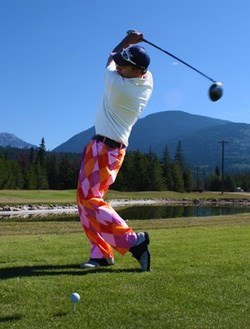Is this good news or what for golfers? Researchers at Mayo Clinic in the United States are moving closer to answering one of the great mysteries of golf: Are yips - that condition that has puzzled us for ages - in your brain or in your mind - and what can be done to cure them?

(Image: RockyGoat, via Wikimedia Commons)
The yips, the baffling condition affecting a significant number of already anxious golfers during putting or chipping, may be a movement disorder and not only the result of undue pressure to perform at the crucial moment of a stroke. In fact, in some cases the affliction can be likened to writers' or musicians' cramps, according to Charles D. Adler, M.D., Ph.D., neurologist and researcher at Mayo Clinic. His latest research on the yips was recently published in the journal Movement Disorders.
Dr. Adler and his colleagues at Mayo Clinic and Arizona State University suggest that in a subset of golfers, involuntary muscle contractions are to blame, resulting in what he calls "golfer's cramp."
Twitchy
The annoying condition (sometimes described as "twitches" or "jerks") that can ruin an otherwise successful round of golf was often thought to be psychological. Dr. Adler said that the overall effect of this study is to try to identify golfers who have a neurologic rather than a psychological cause to their yips.
In the study, 25 golfers who complained of the yips were compared with 25 who did not. The golfers were matched for age, gender and golf handicap. All were asked to perform putts of varying lengths on an outdoor putting green while the electrical activity in their muscles was measured. Wrist movements were measured using electromyography (electrodes placed on the skin of the forearms) and a video camera recorded their putting strokes.
A glove with a difference
A specialised glove, a wireless device with tracking sensors, was used to measure hand and finger movements of the right hand. Seventeen of the golfers exhibited involuntary movements during putting.
In this group of golfers the major finding, on analysis of the glove data, was that the golfers with an involuntary movement had a significant increase in pronation/supination (rotation of the hand). Many also had co-contraction of muscles that extend and flex the wrist.
"Other hand movements of the golfers did not show significant differences," said Dr. Adler. He stressed that golfer's cramp likely only explains a subset of people who suffer from the yips.
"These findings are critical as the next step is to identify treatment options for these golfers. Our plan is to identify golfers with golfer's cramp and study various treatment strategies to see if we can improve the putting and reduce the movement disorder," Dr. Adler said.







































